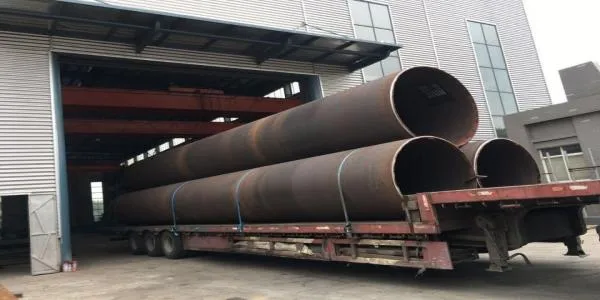Steel pipe piles are essential components in deep foundation systems, used across construction, marine, and infrastructure projects. Selecting the right type is not a one-size-fits-all decision—it requires careful consideration of multiple technical factors. In this guide, we’ll walk through everything you need to know to make an informed choice.
Understand the Project's Soil Conditions
Soil conditions are the foundation—literally—of your decision. Different soils interact with steel pipe piles in different ways. For instance, soft clay and loose silt typically offer low skin friction and require longer or larger-diameter piles to reach load-bearing strata. In contrast, dense sand and gravel may offer higher friction, reducing the pile length needed but increasing driving resistance.
In corrosive soils, such as those rich in sulfates, chlorides, or organic acids, material degradation becomes a concern. Here, corrosion-resistant alloys or coated piles are essential. Soil investigations like borehole drilling and cone penetration tests (CPT) provide valuable geotechnical data that inform pile design. Neglecting proper soil analysis may result in foundation settlement, pile buckling, or total failure.
Key Tip: Always consult a geotechnical report before pile selection to avoid costly rework or structural risk.

Match the Pile to Structural Load Demands
Not all structures exert the same forces on their foundations. A residential building will place much lighter demands on piles compared to a bridge, high-rise, or offshore platform. Pipe piles must be selected based on:
Axial load capacity: Both compression (downward) and tension (uplift) forces.
Lateral load resistance: Caused by wind, earthquakes, or water currents.
Moment resistance: Important for piles that are part of retaining systems or embedded in cantilever walls.
Larger diameter piles with thicker walls offer greater stiffness and capacity but come with higher material and driving costs. Design codes such as AISC, API, and Eurocode provide guidelines for calculating pile capacities under different loading scenarios.
Practical Advice: Don’t underdesign to save costs—it may lead to long-term settlement or structural instability.
Choose the Right Size and Wall Thickness
Steel pipe piles are available in a wide range of sizes, typically from 8 inches to 60 inches in diameter, with wall thicknesses ranging from 0.25 to over 1 inch. Size selection is influenced by:
Load-bearing requirements
Driving equipment limitations
Project budget and schedule
Available lengths and splicing needs
Larger diameters offer higher lateral resistance and are better suited for marine and bridge projects. For heavy industrial structures, engineers often specify 24-inch or 30-inch piles with wall thicknesses of 0.5 inches or more.
Industry Tip: Schedule 40 or 80 pipes may be suitable for light-duty work, but structural-grade piles (such as ASTM A252 Grade 3) are required for heavy foundations.
Select the Appropriate Steel Grade and Standards
Material selection matters. Steel pipe piles must meet strength, ductility, and weldability requirements. Common steel grades and their applications include:
ASTM A252 Grade 2 & 3: The most widely used standard for pipe piles, offering good weldability and strength.
API 5L X42 to X70: Used in energy and offshore projects; higher grades support greater loads.
ASTM A500 Grade C: Frequently used in structural applications where precise dimensional tolerances are required.
In critical applications, steel with Charpy impact testing may be required for cold regions or dynamic loading. Make sure the mill certificates match the project specifications and that the steel supplier offers traceability and quality assurance.
Evaluate Manufacturing Methods and Weld Types
How a pile is made affects its performance and reliability. The three main manufacturing methods are:
ERW (Electric Resistance Welded): Economical and suitable for smaller diameters. Seam is created by pressure and heat without filler metal.
LSAW (Longitudinal Submerged Arc Welded): Ideal for larger diameters and thick-walled pipe. Offers consistent weld quality and better alignment.
SSAW (Spiral Submerged Arc Welded): Cost-effective for very large diameters and long lengths. Spiral seam provides flexibility but may have less bending strength in some applications.
Each method has its pros and cons regarding weld strength, dimensional accuracy, and availability. For critical applications, ultrasonic testing or radiographic inspection may be necessary to verify weld integrity.
Recommendation: For high-impact or deep-driven piles, LSAW is often preferred for its superior straightness and weld strength.
Consider Corrosion Protection Strategies
Steel pipe piles exposed to moisture, seawater, or acidic soil environments are vulnerable to corrosion, which can compromise structural integrity over time. Protection methods include:
External coatings: Such as epoxy, coal tar enamel, or fusion-bonded coatings.
Galvanization: Adds a layer of zinc, ideal for moderate exposure.
Cathodic protection: Uses sacrificial anodes or impressed current systems for submerged piles.
Internal linings: Often used when piles also function as conduits for utilities or fluids.
Corrosion allowance is sometimes factored into the design—by over-sizing the wall thickness to account for gradual material loss over time.
Align with Installation Method and Equipment
How you plan to install the piles affects what type you should choose. Common installation methods include:
Impact driving: Suitable for most soil conditions but may cause vibrations—check for nearby sensitive structures.
Vibratory driving: Faster and less noisy but not ideal for dense soils or very deep installations.
Press-in (hydraulic jacking): Ideal for urban sites with strict noise and vibration limits.
Drilled and grouted piles: Used in hard rock or boulder-rich sites where driving isn’t feasible.
Ensure pile design accounts for drivability, especially in deep or dense soils. Using driving simulation software (like GRLWEAP) helps predict performance and avoid pile damage during installation.
Selecting the right steel pipe pile involves careful analysis of site conditions, load demands, material properties, and installation methods. A well-informed choice not only ensures structural integrity but also enhances efficiency and cost-effectiveness throughout the life of your project.
If you’re working with critical infrastructure, marine construction, high-rise buildings, or heavy industrial foundations, partnering with an experienced steel pipe pile supplier can make all the difference. Take time to compare specifications, request samples or technical consultations, and ensure your selection aligns with both engineering requirements and budgetary goals.






 English
English Español
Español بالعربية
بالعربية











 Phone :
Phone :  Whatsapp :
Whatsapp :  Email :
Email : 


